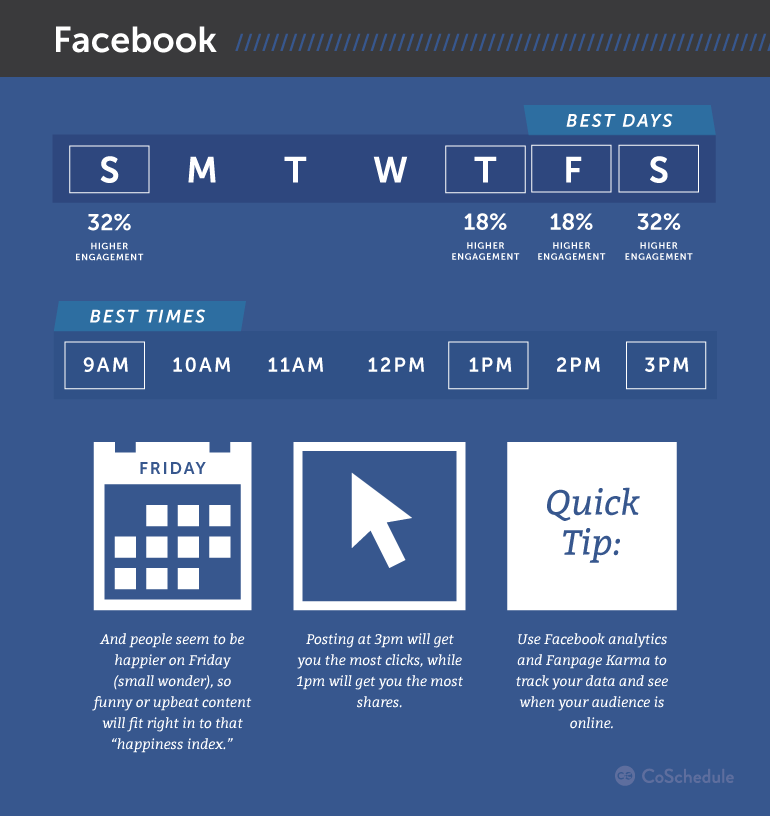Social media has changed the way people communicate. It has changed the way that bloggers market their blog and content. For example, Facebook owns 18% of the market share and 1,870 million active users daily which means an optimized post on Facebook can trigger enormous traffic to your website. However, the only problem is you’re not the only one using Facebook so have enormous competition. For this reason, you need to know how to create smart posts on the top social media networks. So far, my research has shown you should only be worrying about the following – Facebook, Twitter, Pinterest and Google +. These four social media networks will drive high-quality traffic to your website more than the others with fewer users. You should dedicate your time and effort in expanding your presence on these networks. Smart posts in the form of creative copy-writing will help you stand out compared to your competition and increase momentum quickly. Quick scenario before I continue –
Imagine posting your recent article on Twitter using the right headline and #hashtags. Somehow your content gets retweeted by someone with 1 million followers. This alone will skyrocket your traffic to a potential 1 million visitors in a single day. If you are selling products on your blog then having these many visitors on your website increases the likelihood of higher conversions on your products too. The opportunities on social media are endless so you need to focus on optimizing your social media copy-writing.
The good news is creative copy-writing for social media is something which can be learned. It’s a skill that’s perfected over time through research and experience. It also helps to keep track and analyze the data over time to understand how a simple tweak in your writing can make a huge difference. Today, we’ll be exploring my own personal social media copy-writing guide. Let’s get started and please leave your thoughts in the comment section below this content.
1) Understanding the Metrics
Each social media network is different so you need to know what you’re allowed to post and what you should avoid. Some social media networks allow for images while others don’t. Even the ones that allow you to post images have a restriction on size and the amount of text that can be added to it. The only way you’ll find out what you’re allowed to post and what you’re not is by researching. For example, Pinterest emphasizes the importance of images with very little text and you’re allowed to post different size images too. From experience, I know how image size on Pinterest directly correlates with the amount of traffic and engagement you’ll get from your pin. Next, on Twitter, you have a character limit you need to pay attention to. This means you need to write your headline and include #hashtags within 160 characters. Here’s my point,
You cannot start copy-writing unless you know the metrics for different social media platforms. Each one might have a different format affecting the way you showcase your message. I encourage all of you to take some time to learn what the metrics are so you can be better prepared before posting on social media.
Here are some to help you get started –
Twitter – 160 characters | Image size – 1024 x 512 pixels
Pinterest – Expanded pin size – 735 pixels x adjusted to height. | Board limit – 500 (200,000 pins each)
Facebook – Image size – Shared (476px x 249) Profile (40px x 40px)
It’s equally important to know your audience and what times they are on social media. You don’t want to post your message during times of least engagement. For example, check out this Facebook chart –
2) Before – After – Bridge
This is one of the most popular copy-writing formulas for social media. Here’s what each of these words represents and expects you to do as a copywriter –
Before – You are shedding light on the person’s world right now and the problem they are facing. You need to shed light on their current situation.
After – Now that you’ve shed light on their problem, it’s time to have them imagine what it’d be like, having their problem solved.
Bridge – Here’s how to get from “Before” to “After” using your solution. Now you can direct them to your solution.
I personally love this formula because it’s right to the point. What helps you keep it short and concise is the character limits placed on you by networks like Twitter. You have no choice but to be direct which is what makes this copywriting trick so powerful.
Example –
3) Write for Niche, Not Social Media
It’s hard writing for an audience you have no clue about. One mistake I made, in the beginning, was that I targeted the entire social media platform when posting. This made my message too broad and I wasn’t resonating with a lot of people. However, when I switched my strategy it changed the ball game completely. What I did was focus on writing social media posts and tweets for my target niche audience. I use the same strategy when writing content for my blog that I did on social media. For example, when writing content for my blog, I would focus on my audience, their problem and giving them a solution. This way I focused on my message and knew where to research to gather the right information. Now once I was on social media, I did the same exact thing. I catered my message to people in related businesses and used specific #hashtags relevant to my niche. Here’s something I read –
“Thanks in large part to the sheer saturation of social media, ensuring that you’re targeting your content to your primary audiences is critical, and the companies that do it are the ones with the best chance of enjoying a high ROI for their social material.” – expresswriters.com
4) Simple, Brief, and to the Point
Social media copywriting needs to be brief and right to the point. You need to catch the user’s attention quickly so they’ll click-through to your content. Also, by focusing on a catchy social post, you’ve increased the likelihood that they’ll re-share increasing overall engagement. With so many people using social media, it’s no secret competition is at an all-time high. From the time you post on social media, you are competing with thousands of others sharing. You need to keep your message short and right to the point. Don’t forget to add the right #hashtags too. Here are some tips –
- Remove unnecessary words from your message.
- Save on space by shortening your URL using Bit.ly
- Study your competition to find out what they are doing differently.
- Add visuals (images) to get your message across.
Do you know –
“Facebook posts with 40 characters receive a whopping 86% more engagement than longer posts. Tweets are ideal when they’re between 71-100 characters, and Google+ posts perform best around 60 characters.” – expresswriters.com
5) Don’t Forget the Keywords
By this I mean… don’t forget your target keywords. Almost every social media platform has a search engine so users can type in a specific keyword. You’ll have a higher chance of someone clicking through to your content if you add specific keywords to your message. The keywords you use should be related to your content. Why does this strategy work well? For the same reason, it does when people are searching for content on Google. Having a keyword in the title of your content will grab the searchers attention when they are skimming through the results. This has been proven to increase the overall CTR. You need to utilize the same strategy when posting a message on social media for those people using the search field and skimming through the social posts. You’ll have an easier time engaging people on social media when you use “target” keywords in your social posts.
6) The Power of Visuals in Copywriting
According to HubSpot, Facebook posts that include a visual earn 2.3x the engagement as text-only posts, and researchers have discovered that adding a colored visual (such as an infographic) to a post will increase a person’s willingness to read it by 80%.
Adding an image to your post on social media is a great way to deliver your value quickly. It’s a way to build credibility furthermore pushing the reader to click-through to your post. I would say infographics are the best types of visuals to post on social media. Infographics are very interactive with moving graphs and charts providing enormous value to the reader. Finally, visuals appeal to people who don’t speak English as their first language and are trying to find other ways to gain value out of posts. These people have an easier time understanding symbols, graphics and charts rather than complete text.
7) Learn from Competitors
While some hate competition, I love it because it helps me avoid mistakes. I have saved both time and money by researching my competition and doing what they do, but much better. For example, when writing content, I would research my competition to see what they have done to engage readers. I’ll look for videos, infographics and what type of value they have provided. Then, I would look at the social activity to figure out how popular their content was on different social media networks. I know if I can create something better, I’ll outshine them on social media and within the search results. Now I use the same strategy when posting to social media and it’s proven to be extremely valuable. For example, if I’m blogging about self-improvement and sharing my posts on social media, I will take time to observe my competitors “tweets” and Facebook wall posts. I’ll look at the “retweets” they’ve gotten and what headline/#hashtags they’ve used when posting. I would do the same but obviously, make some minor adjustments. I almost forget I will also view the times and days they are posting because I’m sure they’ve researched the best times for highest engagement.
My competition has saved me a lot of headache having to go back and learn everything on my own. I’m not saying to copy what they are doing on social media and sit still. I’m saying to copy what they are doing and find ways to improve and make it better. I’m sure we can all find ways to even outshine our competition by collecting data and making tweaks to our social media posts.
8) Use hashtagify.me
This is strictly for Twitter but I’m sure there are tools for other social networks too. Hashtagify.me is great to find what #hashtags are trending and most popular on Twitter. Before I go live with my “tweet” I’ll spend some time using hashtagify.me to research the perfect #hashtags to add to my “tweets”. The tool is very easy to use because you just need a target keyword. The tool will provide you in table mode #hashtags related to your target keyword. You’ll see the tags popularity, top influencers based on the #hashtag and weekly trend. For Pinterest, I recommend using Pingroupie.com to find group boards with thousands of followers.
Final Thoughts
Copywriting is both an art and a science. On social media, you can use strategic copywriting to increase the overall engagement of your posts. Get started now by using the tips listed above and don’t forget to collect performance statistics. Once you have enough data, you’ll have a clear picture of what’s working and what’s not. You can continue to adjust overtime until you have a copywriting strategy giving you the best results.





